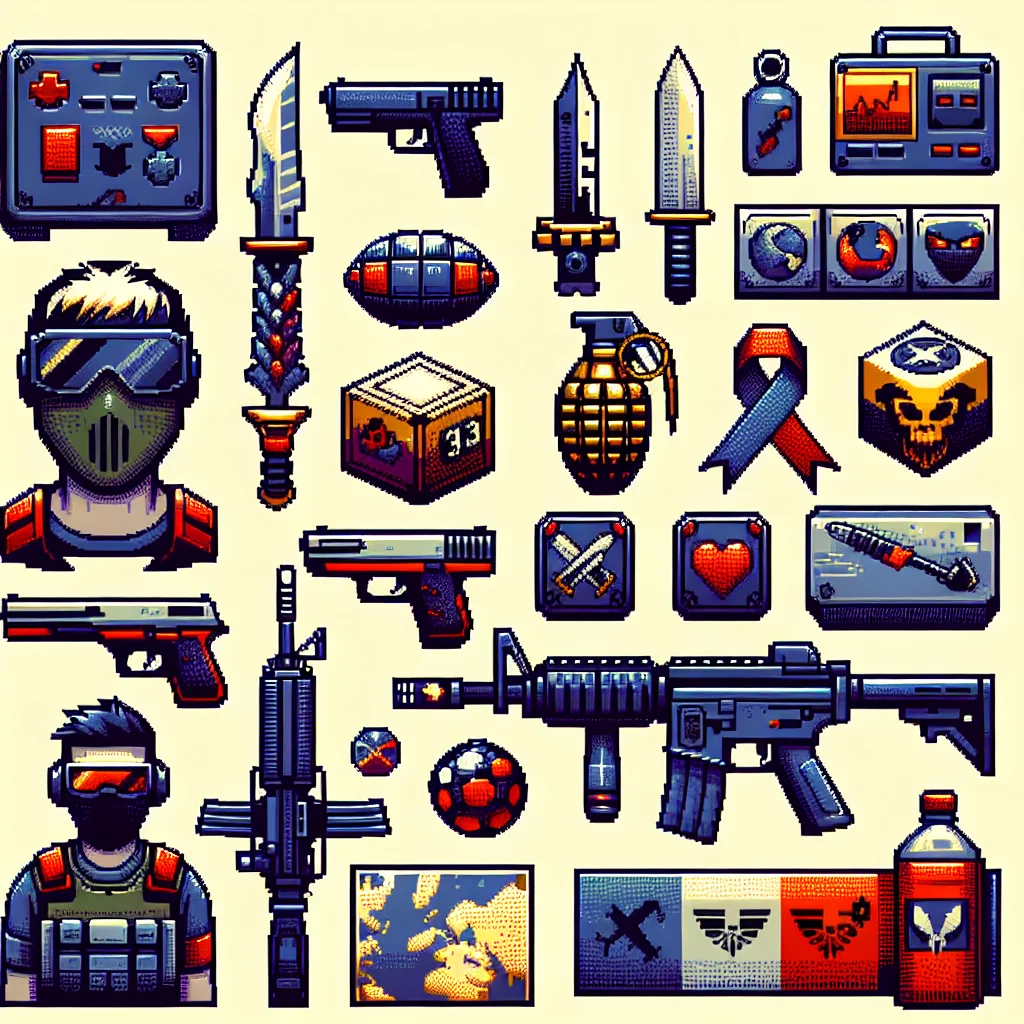counter-strike 1.6 (2003) game icons banners, a milestone in the world of online gaming, has left a lasting imprint not just through its gameplay but also through its iconic game icons and banners. These elements are more than just visual aids; they are a deep-seated part of the game’s identity and community. Initially released in 2003, counter-strike 1.6 (2003) game icons banners quickly ascended to the top of multiplayer FPS games, bringing with it a distinctive style reflected in its game icons and banners.
Table of Contents
These icons and banners serve as the first point of interaction between the game and the player, setting the tone and expectations. They encapsulate the essence of the game—strategy, teamwork, and quick reactions—all wrapped up in a visually appealing package. Understanding these visual elements provides insights not only into the game’s aesthetic and technical design but also into the culture it fostered among its vast player base.
The Evolution of Counter-Strike 1.6 Game Icons
The visual symbols of Counter-Strike 1.6 have undergone several transformations since the game’s early days. Initially, the counter-strike 1.6 (2003) game icons banners were simple, often pixelated representations meant to convey basic information about tools, weapons, and maps. As the game grew in popularity, the quality and complexity of these icons evolved. By embracing more detailed and higher resolution graphics, the icons became clearer and more engaging, enhancing the overall user experience.
This evolution wasn’t just about aesthetics; it mirrored the game’s growing sophistication and the community’s increasing demands. The redesigns helped keep the game relevant and maintained its competitive edge in the fast-evolving gaming industry. Today, these counter-strike 1.6 (2003) game icons banners not only serve functional purposes but also act as nostalgic symbols for millions of gamers worldwide, representing a pivotal era in gaming history.
Designing Icons for Counter-Strike 1.6
Designing game icons for Counter-Strike 1.6 was a meticulous process that combined artistic creativity with technical precision. Designers focused on creating counter-strike 1.6 (2003) game icons banners that were not only visually appealing but also quick to communicate their function to players during high-stress gameplay. The use of intuitive symbols and a consistent color palette helped players recognize and react to in-game elements swiftly, which is crucial in a fast-paced game like Counter-Strike.
The tools used for designing these counter-strike 1.6 (2003) game icons banners ranged from basic graphic design software to more advanced 3D modeling tools, depending on the complexity required. Interviews with the original designers, though hypothetical, would likely highlight a mix of technical challenges and creative breakthroughs that defined the visual style of the game during its peak years.
The Role of Banners in Counter-Strike 1.6’s Popularity
counter-strike 1.6 (2003) game icons banners played a crucial role in community building and promotion of the game. These banners were often displayed on gaming websites, forums, and at esports tournaments, serving as both advertisements and as identifiers for different clans and teams. The effective use of banners contributed significantly to the game’s grassroots marketing strategy, spreading its popularity worldwide.
Case studies on successful banner campaigns show that the most effective ones used striking visuals and clever taglines that resonated with the game’s demographic. These banners not only attracted new players but also built a sense of community among existing ones by highlighting team spirit and competitive excitement, core aspects of CS 1.6’s enduring appeal.
Iconic Banners and Their Stories
counter-strike 1.6 (2003) game icons banners have become almost as legendary as the game itself. These include banners used in major tournaments that have come to symbolize key moments in esports history. Each banner has its own story, often tied to memorable matches or turning points in the game’s competitive scene. For instance, a banner from the 2003 Cyberathlete Professional League (CPL) Winter Championship features the iconic de_dust2 map, evoking memories of epic showdowns and tactical genius.
Fan-made banners also tell stories of community engagement and creativity. These user-generated banners often incorporate popular memes, cultural references, and in-jokes, reflecting the vibrant culture that has grown around the game. They not only enhance the game’s visual landscape but also foster a sense of belonging and identity among players.
Technical Aspects of Creating CS 1.6 Banners
Creating banners for counter-strike 1.6 (2003) game icons banners involves both graphic design skills and an understanding of the game’s culture. Designers must balance aesthetic appeal with functional clarity to produce banners that stand out and convey the intended message quickly. The process typically starts with a concept, followed by a rough layout using graphic design tools like Adobe Photoshop or Illustrator. The choice of colors, fonts, and imagery is crucial, as these elements must align with the game’s gritty and competitive nature.
A step-by-step guide on creating a CS 1.6 banner would include tips on choosing the right tools, optimizing image resolution for fast loading times, and designing with visibility in mind, especially for use in digital environments where banners must be eye-catching even at smaller sizes.
counter-strike 1.6 (2003) game icons banners: Then and Now
Comparing the banners from the early 2000s to those used in today’s game modding communities reveals significant changes in design trends and technologies. Early banners were often simple, focusing more on functionality than flair. Modern banners, however, utilize advanced graphics and animation to create more dynamic and visually engaging designs. This shift reflects broader trends in digital art and design, driven by advances in software capabilities and a deeper understanding of visual engagement strategies.
The legacy of these banners extends beyond mere decoration. They encapsulate the spirit of an era and continue to influence design choices in current versions of the game, serving as a bridge between past and present Counter-Strike communities.
Conclusion
The counter-strike 1.6 (2003) game icons banners have left an indelible mark on the gaming world, symbolizing more than just a game—they represent a culture, a community, and a continuing legacy. As the game continues to be played and celebrated, these visual elements serve as a reminder of its pivotal role in shaping online multiplayer gaming and the esports industry.
Read More play:detj_a5akac= atari breakout







